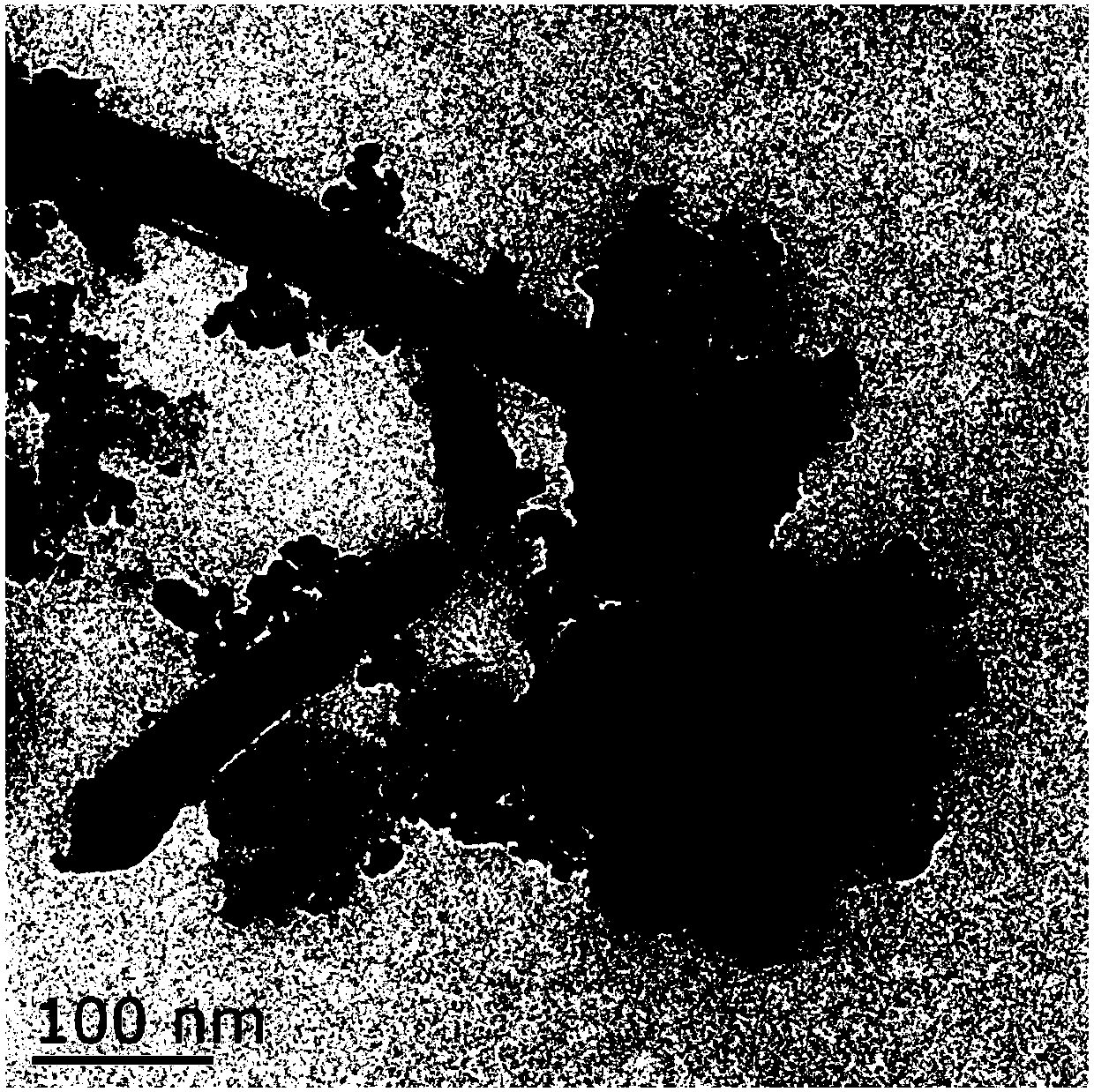Preparation and application for g-C3N4-TiO2/HNTs composite photocatalyst
A technology of g-c3n4-tio2 and composite light, which is applied in the direction of catalyst activation/preparation, physical/chemical process catalyst, water/sludge/sewage treatment, etc., can solve the problems of difficult recycling, low solar energy utilization rate, and reduced specific surface area And other issues
- Summary
- Abstract
- Description
- Claims
- Application Information
AI Technical Summary
Problems solved by technology
Method used
Image
Examples
Embodiment 1
[0029] (1) TiO 2 Preparation of / HNTs:
[0030] Add 2mL of n-butyl titanate and 12mL of absolute ethanol into the beaker, and stir magnetically to form a uniform solution; then add 1mL of glacial acetic acid, and stir magnetically; then add 1.0g halloysite into the above solution, continue Stir to obtain a suspension. Then 1.5 mL of deionized water and 2 mL of absolute ethanol were mixed and slowly added dropwise to the suspension, and stirred continuously for 24 hours to form a sol-gel. The sol-gel was dried in a drying oven. Then put the obtained xerogel into agate mortar and grind it into powder, put it into a muffle furnace for calcination at 500°C for 2h, wash, centrifuge, dry, and grind it into powder to obtain TiO 2 / HNTs;
[0031] (2)g-C 3 N 4 -TiO 2 / HNTs composite photocatalyst preparation:
[0032] Weigh 0.2g and get melamine and join in the agate mortar, then take by weighing the TiO prepared by 1.0g step (1) 2 / HNTs were added to the above mortar and grou...
Embodiment 2
[0035] (1) TiO 2 Preparation of / HNTs:
[0036]Add 2mL of n-butyl titanate and 12mL of absolute ethanol into the beaker, and stir magnetically to form a uniform solution; then add 1mL of glacial acetic acid, and stir magnetically; then add 1.0g halloysite into the above solution, continue Stir to obtain a suspension. Then 1.5 mL of deionized water and 2 mL of absolute ethanol were mixed and slowly added dropwise to the suspension, and stirred continuously for 24 hours to form a sol-gel. The sol-gel was dried in a drying oven. Then put the obtained xerogel into agate mortar and grind it into powder, put it into a muffle furnace for calcination at 500°C for 2h, wash, centrifuge, dry, and grind it into powder to obtain TiO 2 / HNTs
[0037] (2)g-C 3 N 4 -TiO 2 / HNTs composite photocatalyst preparation:
[0038] Weigh 0.5g and get melamine and join in the agate mortar, then weigh the TiO prepared by 1.0g step (1) 2 / HNTs were added to the above mortar and ground thoroughly...
Embodiment 3
[0041] (1) TiO 2 Preparation of / HNTs:
[0042] Add 2mL of n-butyl titanate and 12mL of absolute ethanol into the beaker, and stir magnetically to form a uniform solution; then add 1mL of glacial acetic acid, and stir magnetically; then add 1.0g halloysite into the above solution, continue Stir to obtain a suspension. Then 1.5 mL of deionized water and 2 mL of absolute ethanol were mixed and slowly added dropwise to the suspension, and stirred continuously for 24 hours to form a sol-gel. The sol-gel was dried in a drying oven. Then put the obtained xerogel into agate mortar and grind it into powder, put it into a muffle furnace for calcination at 500°C for 2h, wash, centrifuge, dry, and grind it into powder to obtain TiO 2 / HNTs
[0043] (2)g-C 3 N 4 -TiO 2 / HNTs composite photocatalyst preparation:
[0044] Weigh 0.8g and get melamine and join in the agate mortar, then take by weighing the TiO prepared by 1.0g step (1) 2 / HNTs were added to the above mortar and groun...
PUM
 Login to View More
Login to View More Abstract
Description
Claims
Application Information
 Login to View More
Login to View More - R&D
- Intellectual Property
- Life Sciences
- Materials
- Tech Scout
- Unparalleled Data Quality
- Higher Quality Content
- 60% Fewer Hallucinations
Browse by: Latest US Patents, China's latest patents, Technical Efficacy Thesaurus, Application Domain, Technology Topic, Popular Technical Reports.
© 2025 PatSnap. All rights reserved.Legal|Privacy policy|Modern Slavery Act Transparency Statement|Sitemap|About US| Contact US: help@patsnap.com



